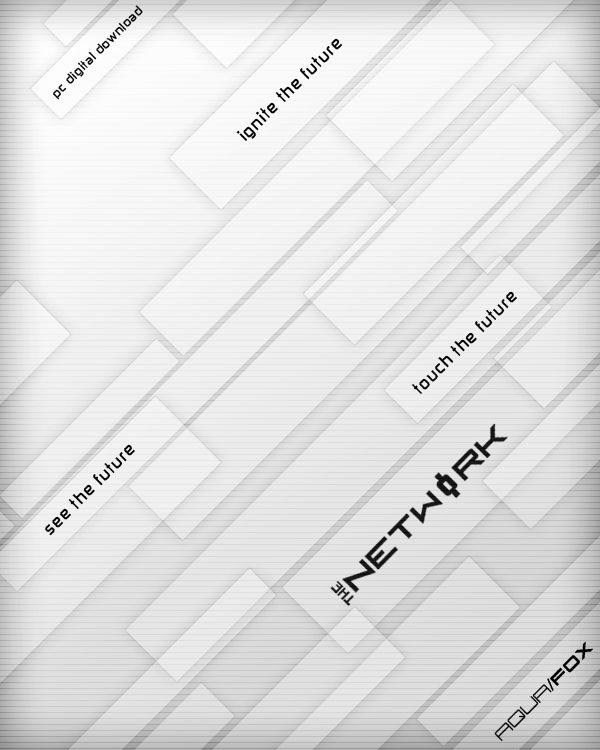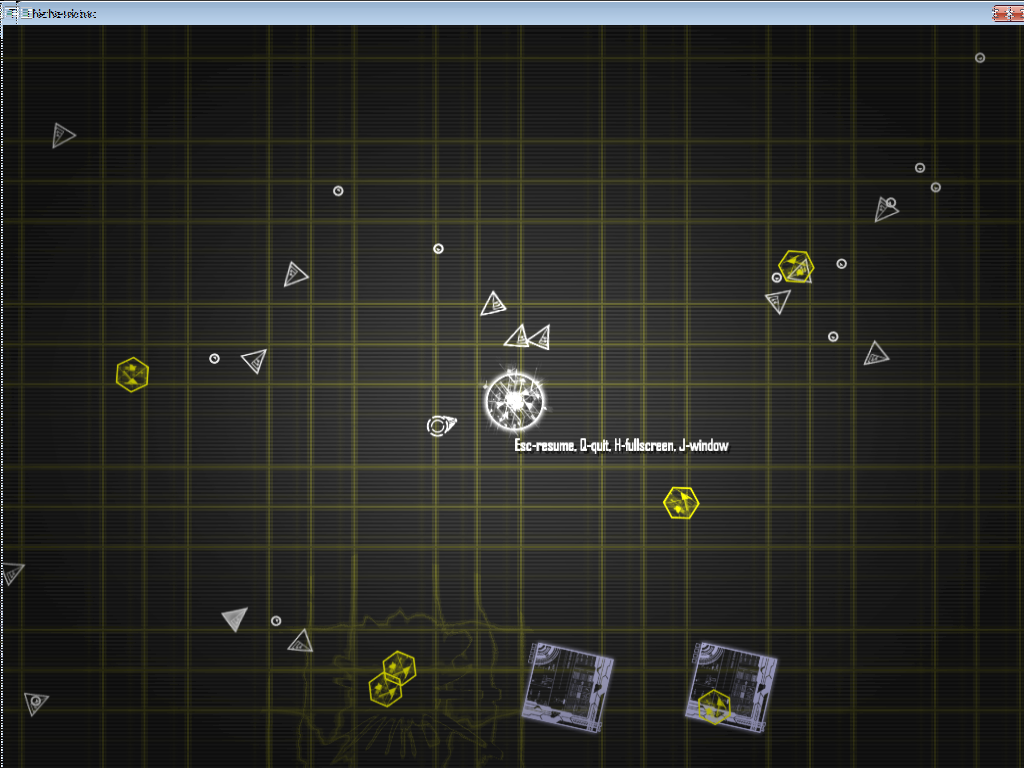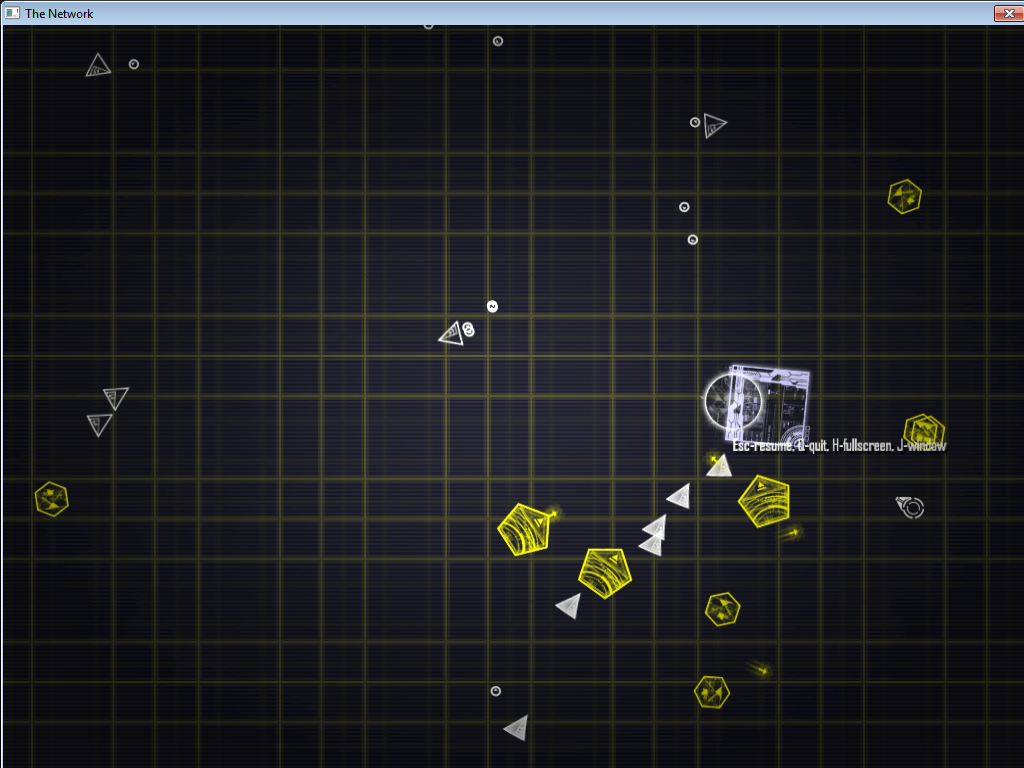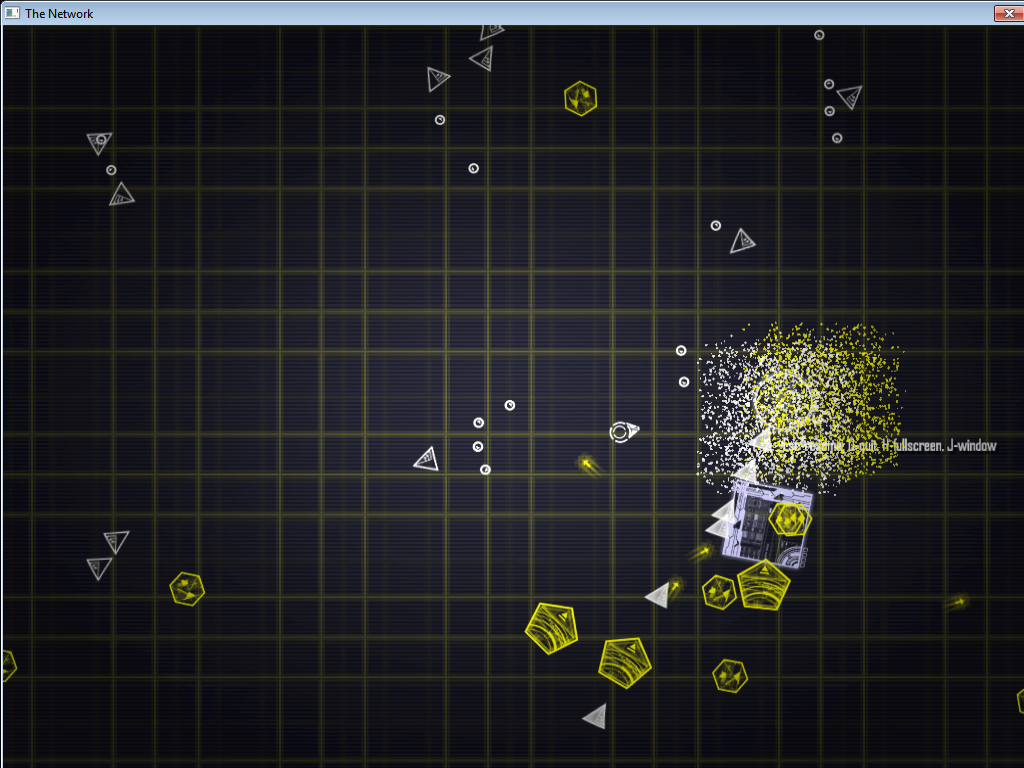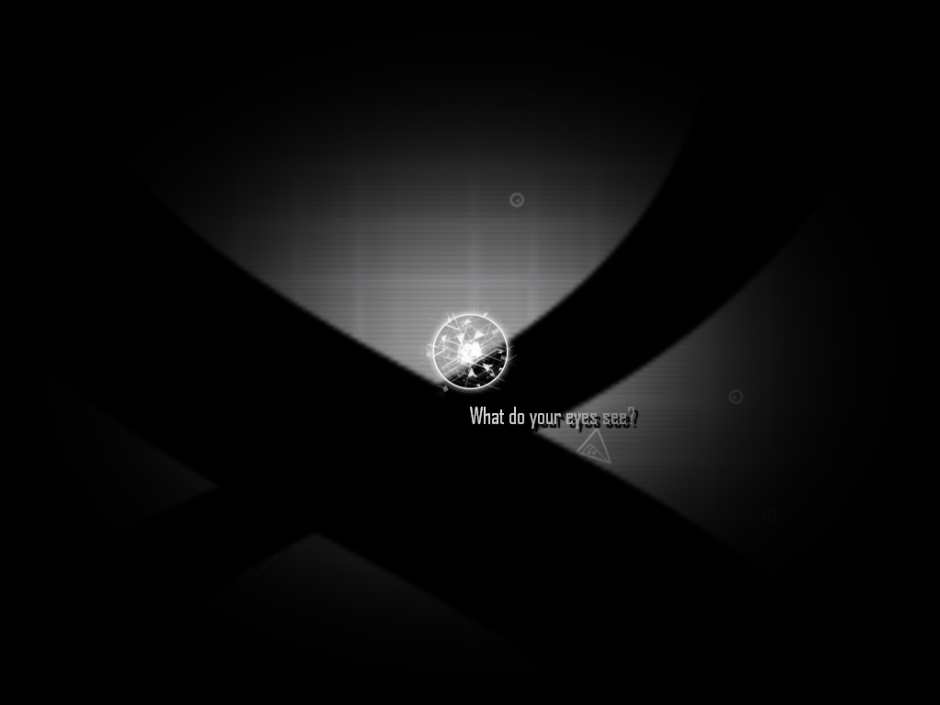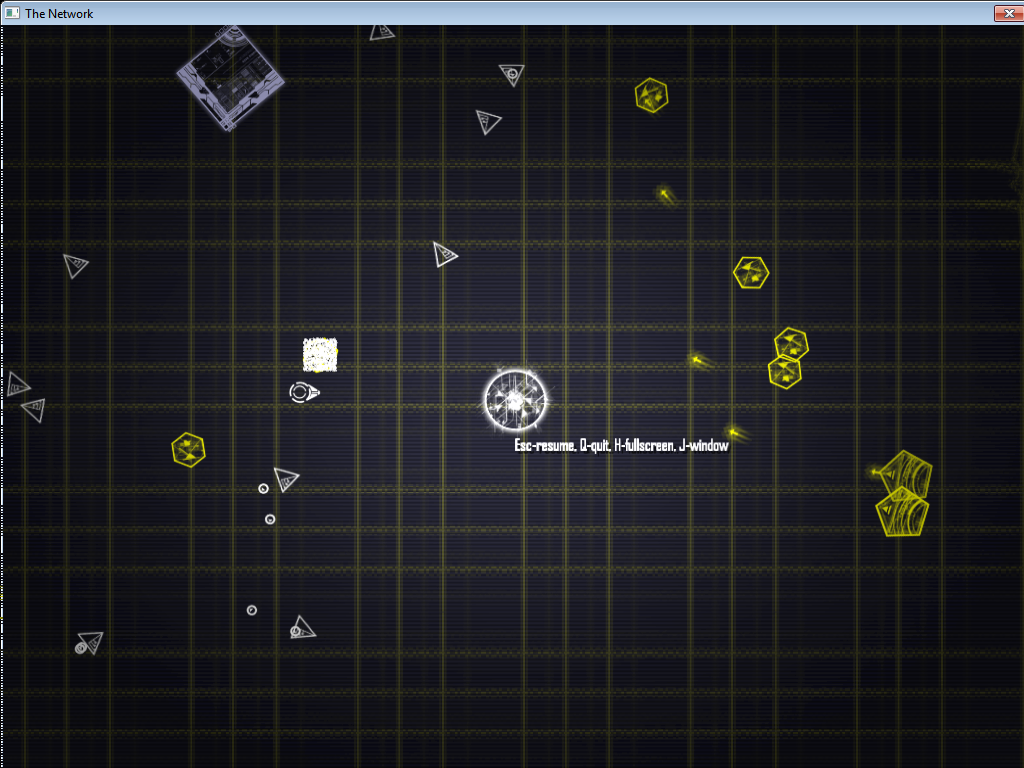You’ve played Asteroids before, right? Of course you have. Even if you haven’t played the arcade classic, I’m sure you’ve experienced something similar. That’s really the only way I can begin to describe Aqua Fox Studio’s The Network, even if by the time you end up playing this game, and you totally should, we’ll agree that it’s almost nothing like that. For all they have in common — they’re both space shooters (sort of), they both bombard you with obstacles and they’re both easy to pick up and play — there are plenty of drastic differences between the two.
For one, in The Network you don’t shoot an all-destructive laser. Sure, you have a weak one to gradually blow up weak enemies, but the real power lies in the projectiles called “nodes” you can guide toward your targets.
The game’s tutorial stages do a fair job of getting you acclimated to the game. Your avatar is a floating, sentient sphere caught in an arena of sorts with triangular, transparent nodes and bits of data represented by large squares that resemble computer chips. You use the WASD control scheme to direct movement and as you run into the nodes, they turn completely white and begin to orbit your sphere. Once attached, you direct these nodes by setting your reticle with the mouse, then clicking and holding the right mouse button.
The whole point of the game is to coax these nodes into colliding with the data points until they’re destroyed. At certain stages in the data’s destruction, you earn the ability to have more nodes follow you, up to a dozen. The added capacity comes in handy as the number of targets increases during the game’s progression. The first stage is completely devoid of any sort of damaging elements. I’d suggest you take this time to get used to the game’s controls and physics, because once you come across the game’s first enemies, the difficulty ramps up considerably.
During the tutorial, the only elements onscreen are black and white. It’s just you, the nodes and the data points. The first bit of color you see is a welcome surprise until you learn that everything yellow is totally out to get you. At first it’s just bits of yellow, hexagonal rogue data floating around as you try to destroy the larger data points. Every hit you suffer from these rogues scatters the strength of your orb’s signal strength. As the signal weakens, the background and some of the foreground becomes a bit blurry and pixilated. It’s an ingenious substitute for a health gauge. Let your signal grow weak enough and you’re sent to the beginning of the stage.
The little yellow hexagons are easy to handle, as the left mouse button allows you to emit a weak laser that destroys them in time. After awhile larger, stronger rogues with the ability to shoot their own projectiles show up. These guys are impervious to your laser; you’ll need to coax the nodes following you into these. Then the mines come and it’s all an uphill battle from there.
Floating through the game’s 20 stages, which shouldn’t take most gamers more than a few hours to power through, is undoubtedly fun. That is, until the screen is so overridden by enemy forces you can hardly find a safe place to run. This wouldn’t be an issue if movement didn’t feel so floaty. The rapid movement of smaller enemies and larger foes’ projectiles makes getting through most stages past the first few infuriatingly difficult. Add to that the fact that nodes sometimes take a while to make it to their target once you set your sights and it gets a bit more frustrating.
The story behind The Network is pretty interesting for what it is, but it’s tough to really say much without giving away most of the surprise that makes it worth playing yourself. All I can tell you is that it succeeds as a complement to surreal films like The Matrix that make you second-guess trusting your computer. With that in mind, don’t freak out as the first mission boots up and the screen tells you that your Social Security number is being tracked (or should you?). Some of the interactions you have with the game’s overarching plot are nice distractions from the core gameplay, especially after particularly frantic stages.
At $5, you’d be hard-pressed to expect much more from The Network than it delivers. Its core gameplay is a great idea executed fairly well. One of the only things I can complain about is how sluggish the control feels in both movement and action when contrasted with what’s expected of you. Then again, the game in motion is reminiscent of the human immune system fighting off a viral infection — it’s a beautiful thing to witness and you feel quite accomplished once you finish most stages, something you can’t really say for many games these days.
Even if it gets a bit frustrating at times, you can’t help but notice how pretty The Network is in its simplicity. When you consider that it was created by a one-man outfit, well, that makes it all the more enticing. I’d consider the asking price an investment in Aqua Fox Studio. It’s definitely worth it.
The game is available now through the Desura download service.

